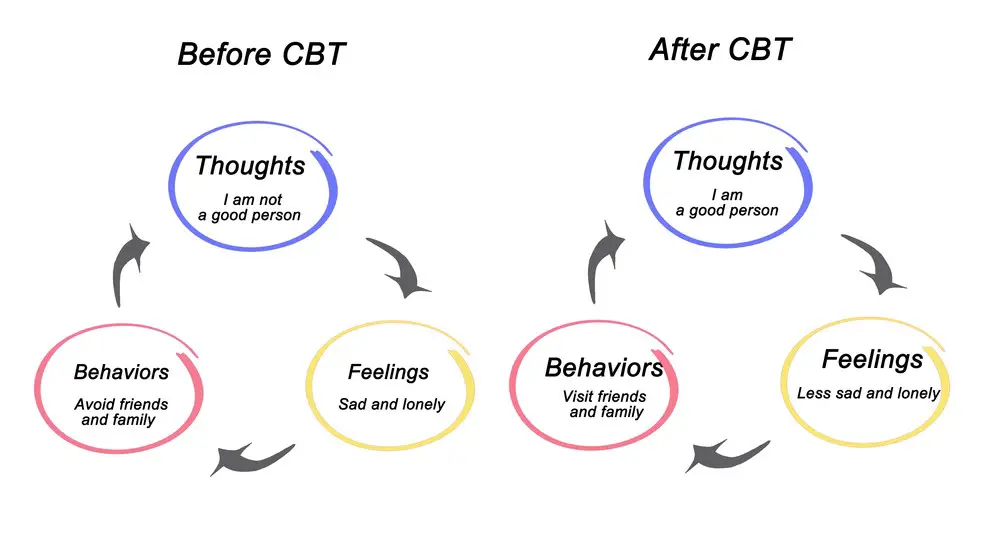As a BetterHelp affiliate, we receive compensation from BetterHelp if you purchase products or services through the links provided
Therapists require advanced tools to address today’s escalating stress epidemic effectively. Digital innovations transform therapy by making treatments more engaging, accessible, and personalized. Emerging technologies are equipping therapists with the means to help clients reduce anxiety, depression, and burnout. This article explores cutting-edge digital therapy tools that enable better patient experiences and outcomes.
Digital Diagnostic Assessments
Gaining an accurate patient profile is crucial for appropriate therapy. Traditional pen-and-paper assessments have limitations. Patients might provide less precise answers when self-reporting. Results lack nuance. Digital assessments via apps and chatbots solve these issues using AI and data analytics.
Customized questionnaires, delivered online and facilitated by behavioral health EMR software, offer a clearer understanding of stress sources and symptoms. These questionnaires go beyond simple scale scores, as response patterns provide deeper insights. Such detailed data clarity enables therapists to craft personalized treatment plans grounded in digital insights, moving away from reliance on guesswork.
Some digital tools assess vocal patterns and facial expressions during interviews for advanced emotion detection. These biological insights detect hidden stress signals that patients may not self-report. AI-powered apps deliver robust patient analysis for precise care.
Digital Mindfulness & Meditation
Mindfulness practices are proven to alleviate anxiety, depression, and toxic stress when done regularly. However, many patients struggle with consistency. Digital mindfulness solutions help overcome this via guided meditation reminders and tracking.
Engaging video and audio sessions, available 24/7 through apps, simplify daily practice for those with busy lifestyles. Patients can select from mindfulness content personalized to their needs. Reminder notifications keep motivation strong between sessions.
Usage trackers and dashboards allow therapists to monitor patient progress and encourage consistency. Digital tools drive mindfulness habit formation for lasting stress relief. Patient accountability and engagement improve dramatically compared to analog methods.
 Gamified Cognitive Techniques
Gamified Cognitive Techniques
Cognitive behavioral therapy CBT trains patients to counter unhealthy thought patterns contributing to their stress. However, worksheets and journaling can lose effectiveness over time due to boredom. Gamified cognitive apps re-engage patients.
Fun cognitive exercises like puzzles and memory and concentration games implicitly embed therapeutic techniques. As patients play they naturally practice identifying and reversing negative thought loops. This repetition trains the mind out of destructive thinking styles that fuel anxiety and depression.
Scorekeeping and rewards add motivation to keep playing. These tools drive mental health benefits by wrapping therapy in fun and varied apps while reducing drop-off rates. The data also supports therapists monitoring patient progress.
AI Chatbots for Coping Assistance
Chatbots are transforming digital therapy through conversational AI. Patients can engage with supportive bots about their stressors anytime via messaging. Natural language processing detects feelings and provides targeted support like CBT techniques, guided relaxation, or growth reflections.
As patients use chatbots, the AI continually learns and personalizes responses like a virtual therapist. These bots foster a sense of consistent support between live therapy sessions. Patients gain coping skills in real-time moments of need versus waiting until the next appointment.
For therapists, chatbot data reveals life patterns triggering patient stress. Therapists can use these AI insights to optimize treatment plans and provide better in-the-moment support. Bots extend the therapist’s reach.
Telehealth for Accessibility
Many patients face barriers to frequent in-office therapy, like location restrictions, mobility challenges, or packed schedules. Telehealth video visits enable therapy from home, removing logistical obstacles to mental health management.
Virtual therapy gives patients access to top specialists globally versus just locally. It also enables therapists to monitor body language and tone more closely during visits than phone sessions. Combined with digital homework apps, continuity improves.
For therapists, the video integrated directly into EHR and practice management systems streamline workflows. Digital intake forms and billing also optimize administration. This technology significantly minimizes no-shows. Telehealth makes therapy more convenient and consistent.
Analytics for Progress Tracking
Is the treatment moving the needle on patient stress? Legacy methods rely on intermittent progress reports. Digital analytics provide ongoing objective data about engagement, skills usage, symptom patterns, and more to quantify treatment effectiveness.
Dashboards compile metrics from therapy apps, assessments, chatbots, and telehealth to provide a comprehensive snapshot of patient progress. This visibility enables therapists to swap ineffective approaches for targeted interventions. Patient accountability surges when progress is tracked digitally.
Analytics also help therapists showcase and document outcomes to patients and insurers. Data demonstrates the value delivered while advocating for continued care. Measurement-based care using digital tools is the future.
Wearable Stress Tracking
Wearables like smartwatches and fitness trackers monitor biological signals related to stress and anxiety. Heart rate, sleep patterns, activity levels, and more provide insights into lifestyle factors influencing patients’ mental health.
With patient consent, therapists can access longitudinal data via wellness app dashboards for a more complete view. This physiological data paired with digital therapy, helps identify high-stress periods and customize treatment. Patients also gain self-awareness of stress triggers which improves self-management.
Wearables make stress tangible through real-time biofeedback. Instead of vague descriptions, therapists see objective stress measurements over time. This data can validate or reveal discrepancies in patient self-reports, leading to refined interventions. Whole-person data leads to better therapy.
Prescription Digital Therapeutics
Digital therapeutics are app-based treatments that require a physician’s prescription. As prescription medications treat physical conditions, digital therapeutics target mental health conditions. They must meet clinical standards for effectiveness and safety.
Digital therapeutics use interactive lessons and practice to guide patients through months-long CBT and mindfulness programs. Therapists monitor use and progress through integrated dashboards. Assessments confirm therapy effectiveness and symptom improvements.
Under clinician oversight, digital therapeutics enable safe, at-home mental health management, offering cost-effective accessibility. Prescription apps help therapists customize treatment and demonstrate outcomes. They represent the future of scalable, measurable therapy.
FAQs
How do digital tools improve therapy versus traditional talk sessions alone?
Through engaging apps and data analytics, digital mental health tools drive consistent skill practice and measurable progress between sessions. This boosts outcomes and supports therapists with robust patient insights.
What are some limitations of digital therapy tools?
Blended approaches balance the convenience of digital tools with the personalized support of human therapists, despite limitations such as data privacy risks, reliance on technology proficiency, and lack of human connection.
How can therapists integrate tech without losing personal connections?
Using tech for progress tracking, assessments, and skill practice preserves live sessions for sensitive counseling conversations and relationship-building. Video visits also maintain personal connections remotely.
Do most insurance plans cover digital mental health solutions?
Currently, digital therapy is not as widely reimbursed as in-person therapy. However, insurance coverage is expanding, especially for recognized prescription digital therapeutics. Additionally, many apps offer affordable self-pay options.
Conclusion
Digital innovation removes therapy barriers by boosting accessibility, engagement, and session continuity. Data and AI-driven insights lead to better, more personalized treatment plans. Gamified apps and chatbots make practical skill-building enjoyable—the latest tools position therapists to help patients control stress amid hectic modern life.
By embracing technology, therapists can collaborate with patients digitally anywhere and analyze progress more objectively. This unlocks the next level of preventative mental healthcare – one driven by data and designed for real behavior change. The digital revolution promises more positive and proactive stress management accessible to everyone.
- 7 Ideas to Help You Relax and Unwind on a Family Vacation - April 27, 2025
- How Having Cybersecurity Protection Helps You Relax - April 25, 2025
- 8 Reasons Why Spending Time Outside Calms You Down - April 25, 2025
This site contains affiliate links to products. We will receive a commission for purchases made through these links.


 Gamified Cognitive Techniques
Gamified Cognitive Techniques
